Jennifer Arellano
Social Media & Content Manager at Qinera
Read more postsStarting a multisensory classroom project has not been an easy path, as we are a small public school. After a lot of reading, researching and searching for books, projects, materials and activities, we considered that a multisensory space would allow us to collaborate in the overall development of our students. With this idea in mind we started with this project which is carried out in the “Chameleon” classroom (the name of our multisensory classroom).
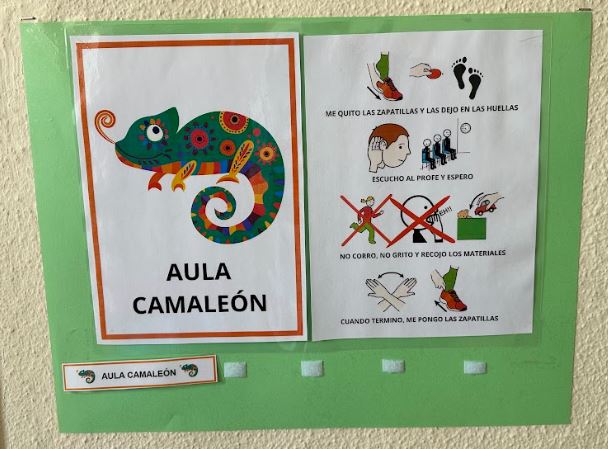 Although at CEIP Federico García Lorca in Arganda del Rey (Madrid) we have been running the project for two years, it would be fair to say that we are in the early stages of setting up the room; it is being equipped and completed little by little, adding new materials as we go along.
Although at CEIP Federico García Lorca in Arganda del Rey (Madrid) we have been running the project for two years, it would be fair to say that we are in the early stages of setting up the room; it is being equipped and completed little by little, adding new materials as we go along.
Our objective is to carry out different types of activities based on the needs of the student while taking care of their sensory profile. Therefore, the materials and their functionality change depending on the students we are working with.
“There is nothing in the intellect that has not previously passed through the senses” (Guirao, 1980, p. 15).
All the contents we work with in the classroom constitute the first element upon which any type of learning is built, and at the same time, a valid strategy for working with students with special educational needs. In this way, we achieve greater attention and greater participation, as they learn through games and interactive activities involving movements that are tailored to them.
In our classroom, there are two distinct areas as we are currently focusing on two main aspects: motor skills and executive functions. In terms of bodily and psychomotor development, we are working on sensory-motor pleasure, vestibular stimulation, movement, body schema, and more. Regarding cognitive-executive skills and aspects, we are focusing on exploration capacity, orientation response, attention, perception, spatial orientation, memory, and psycho-affective states.
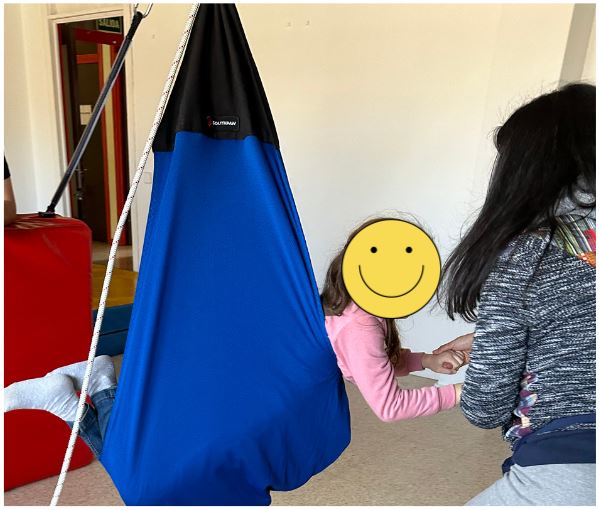
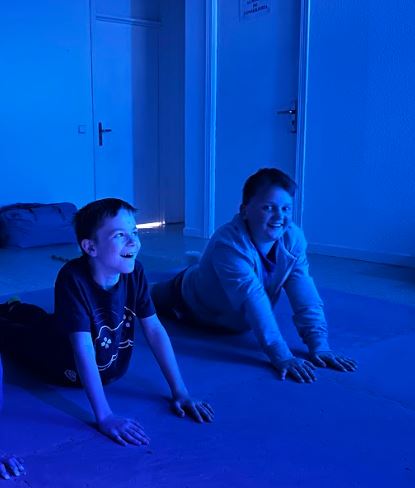
Working with a student with different linguistic abilities will lead us to achieve prerequisites for cognitive growth, as cognitive and linguistic growth are interdependent. This means that the development of cognitive skills will influence the acquisition of linguistic skills, and vice versa.
In addition to these activities, which you can see in the photos, we carry out a series of routines that help us with anticipation, facilitating time management and spatial distribution with our students. In each and every session in the multisensory classroom, we follow the same order:
As some of our students have similar needs to each other, we aim to achieve some overall objectives through our work in the `Chameleon´ Classroom.
COGNITIVE SKILLS
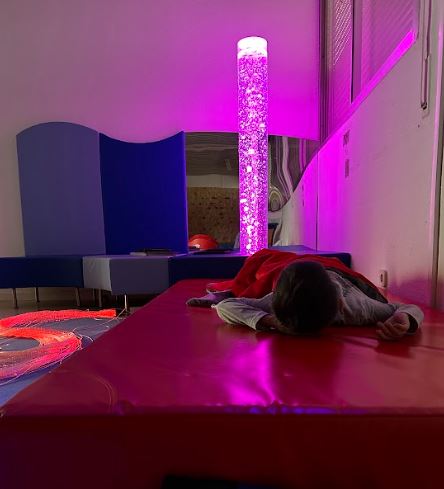
LANGUAGE
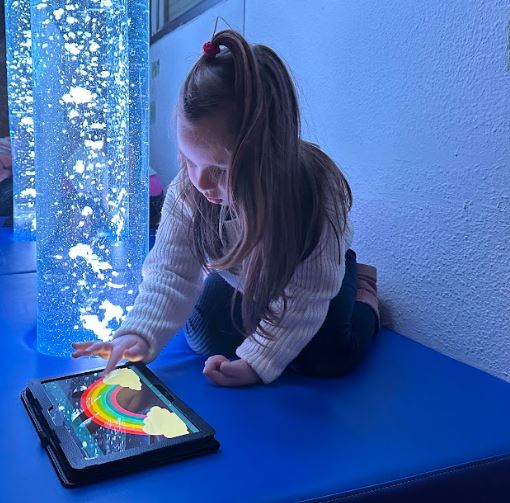
MOTOR SKILLS
SOCIO-EMOTIONAL
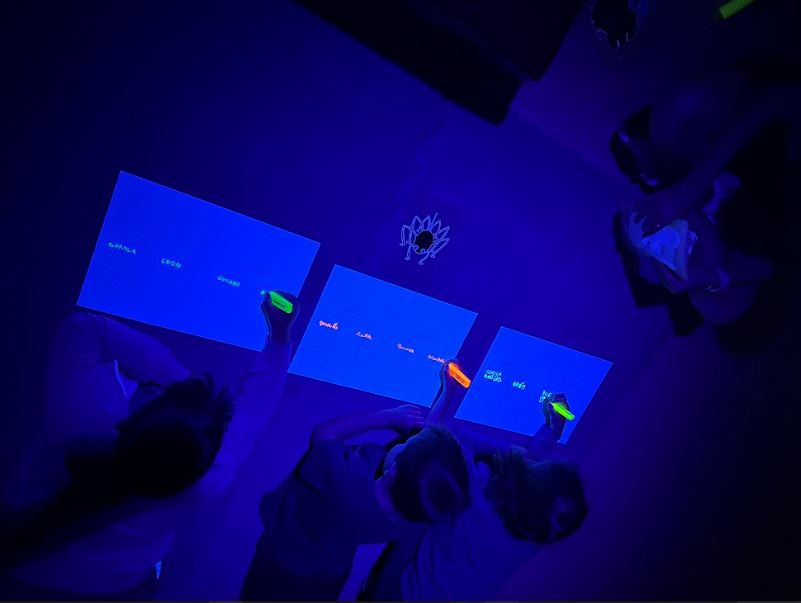
In general, our intervention is not focused solely on stimulating the senses, but rather on using sensory stimulation as a means and not an end. It serves as a bridge that allows us to approach the child and communicate with them, restoring, to the best of our abilities, the socio-emotional foundations that enable communication.
Transversally, the entire program aims to provide satisfying and enjoyable experiences that reinforce exploratory behavior, autonomy, and creative capacity. In this way, we foster a solid foundation for healthy self-esteem.
We are CEIP Federico García Lorca in Arganda del Rey (Madrid) and we have been sharing experiences with our students since 1979. An important date for us was 2009, when we became part of the network of preferred centers for students with special educational needs derived from Autism Spectrum Disorder (ASD).
Every year, we welcome students with special educational needs at our school, not only related to autism but also with other diagnoses.
Due to the neurodiversity of our students, we realized that it was necessary to expand the resources of the school to meet these needs. We also strive to innovate and improve our contribution and foster inclusion and participation in what we do.
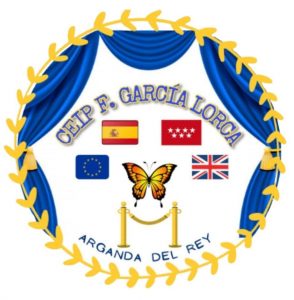
This article has been written by members of the teaching team at CEIP Federico García Lorca in Arganda del Rey and reviewed by the marketing team at Qinera.
If you want to learn more about the benefits of Multisensory Environments or see how you could adapt it to your space, therapeutic goals, and users, you can send an email to hello@qinera.com.
27 June 2025
Multisensory rooms are becoming more and more common in educational, therapeutic, and residential settings. Their ability to stimulate, calm, or emotionally support people with diverse...
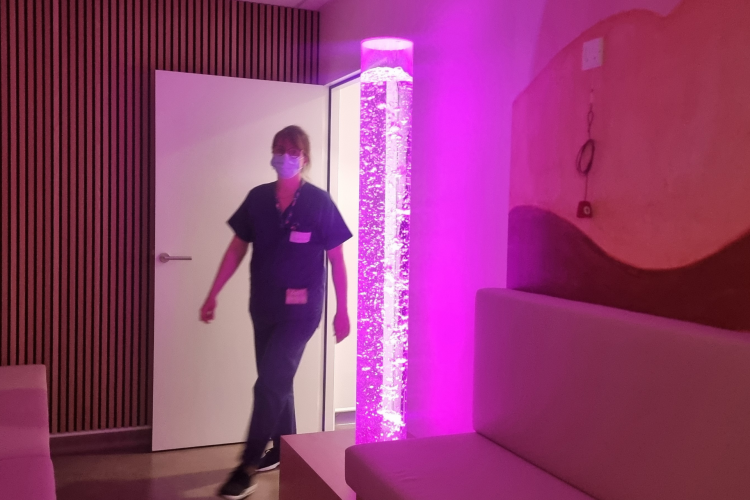
30 May 2025
At Hôpital Privé du Confluent in Nantes, France, multisensory rooms have been incorporated to enhance the patient experience. Waiting before surgery is a delicate moment....

22 April 2025
This article from Rehasalud, a neurorehabilitation centre located in A Coruña (northwest Spain), illustrates how multisensory rooms have become a key element in supporting neurological...